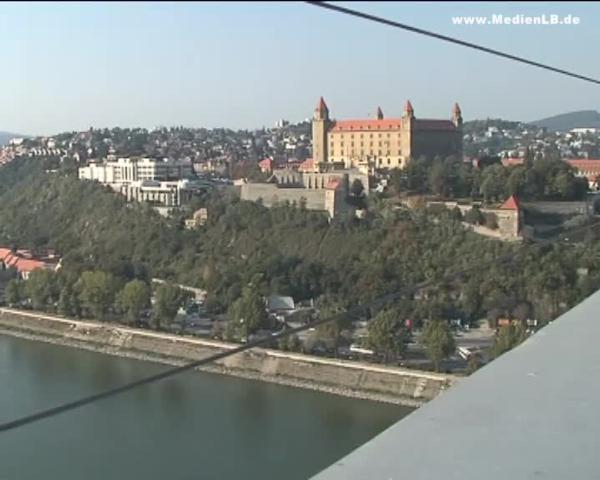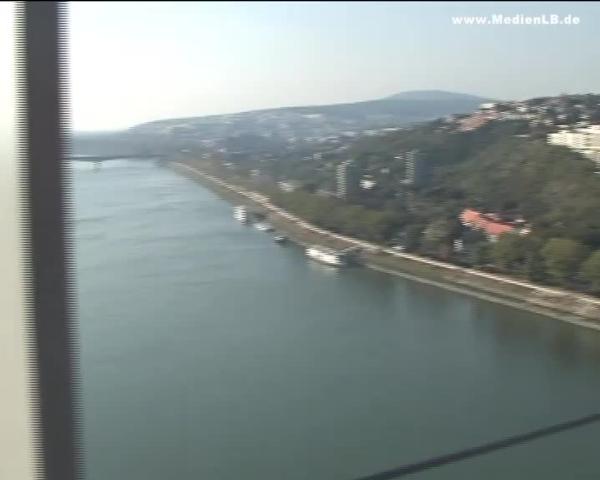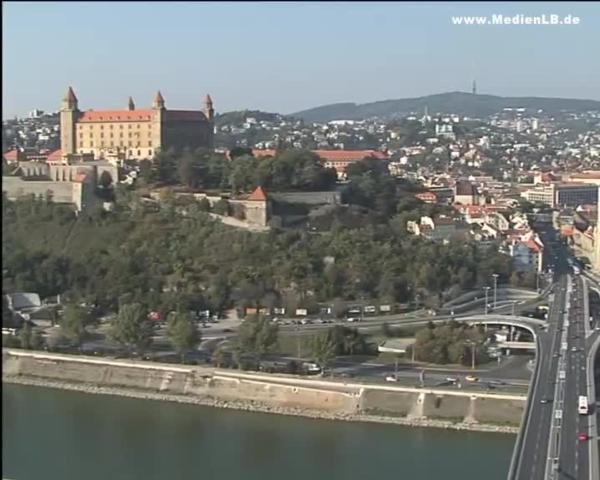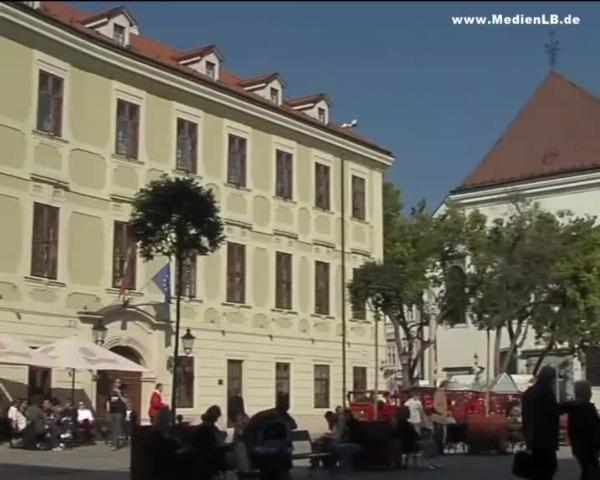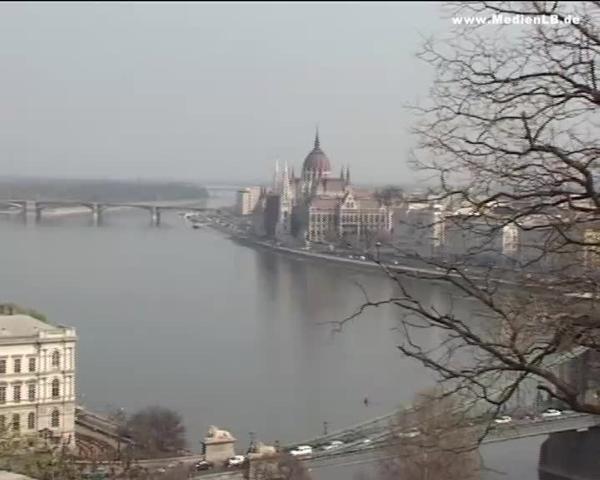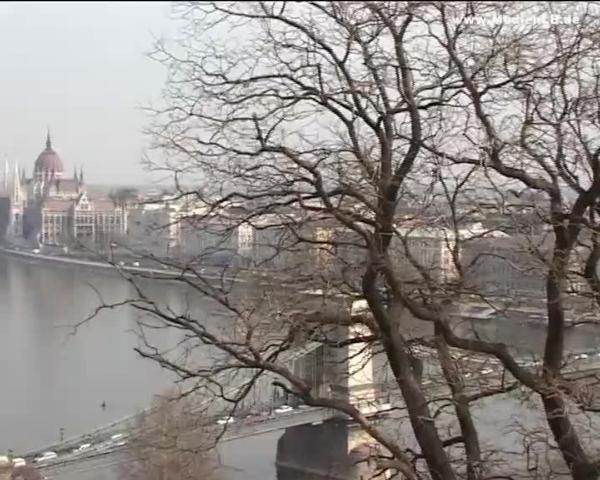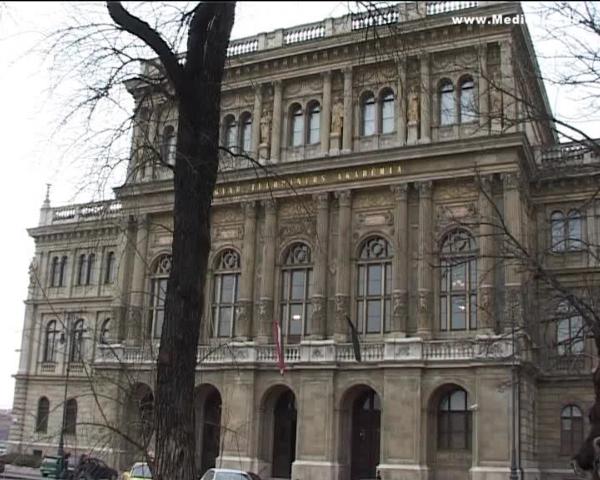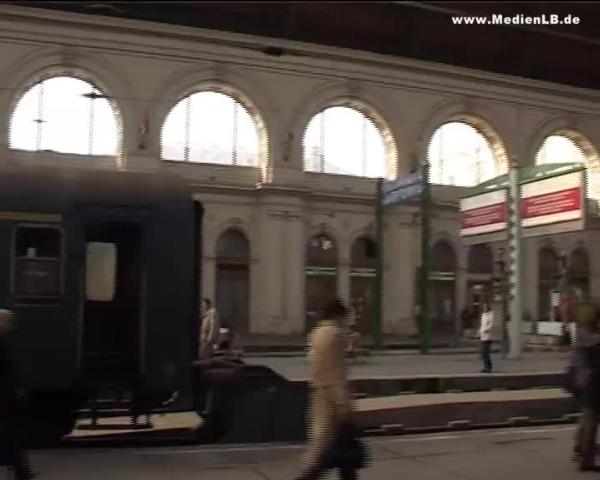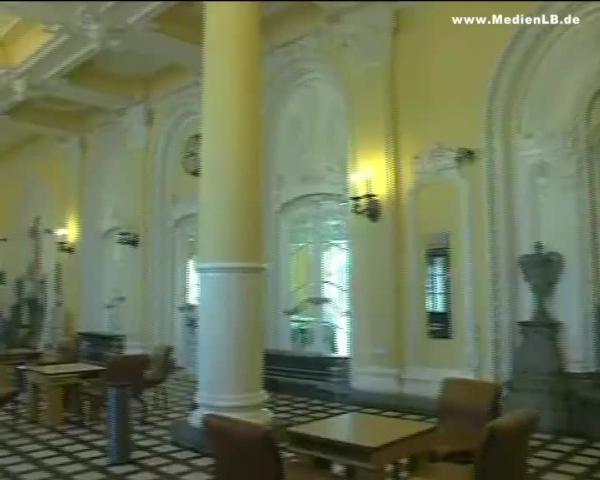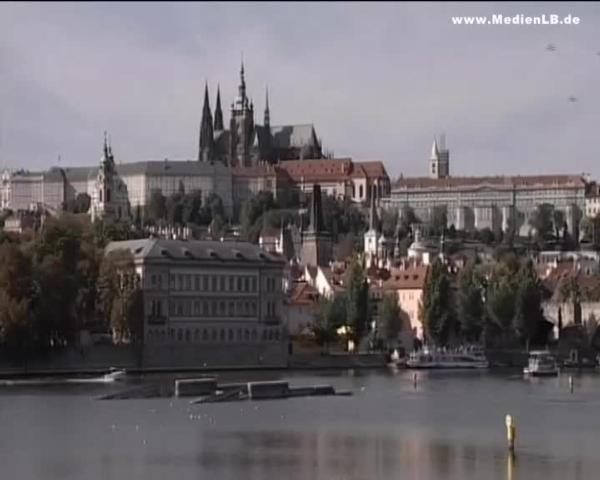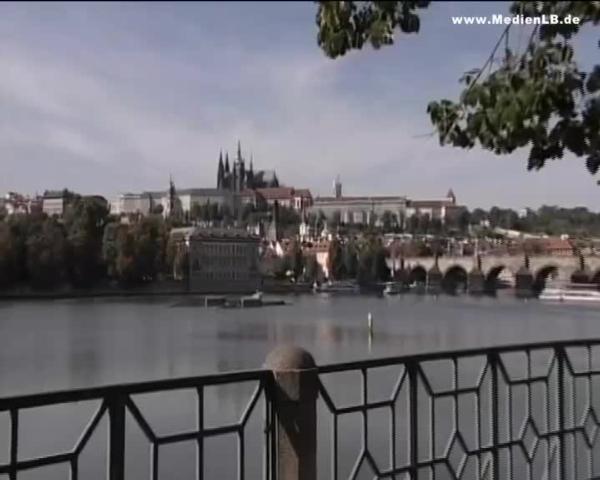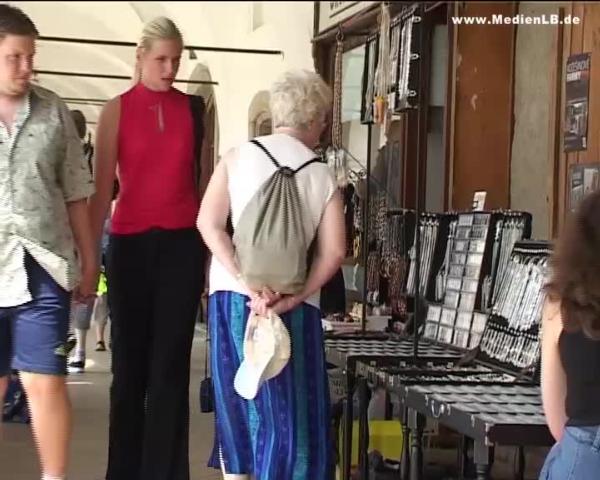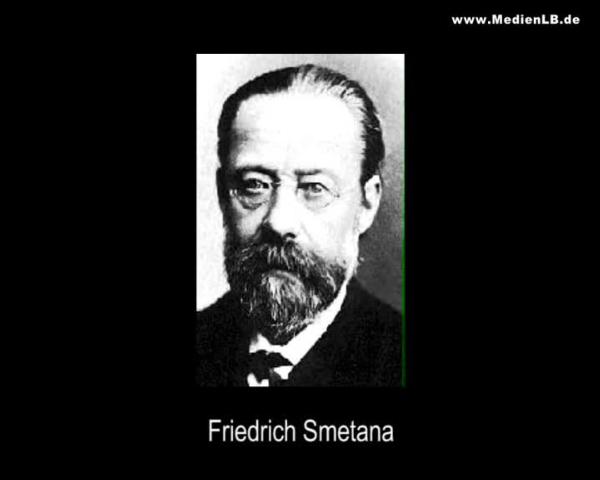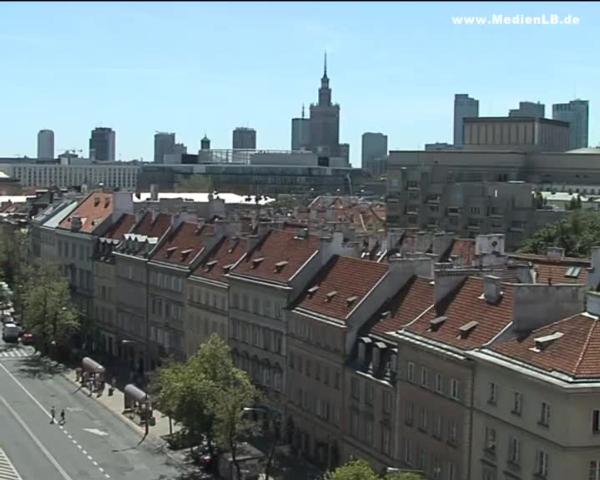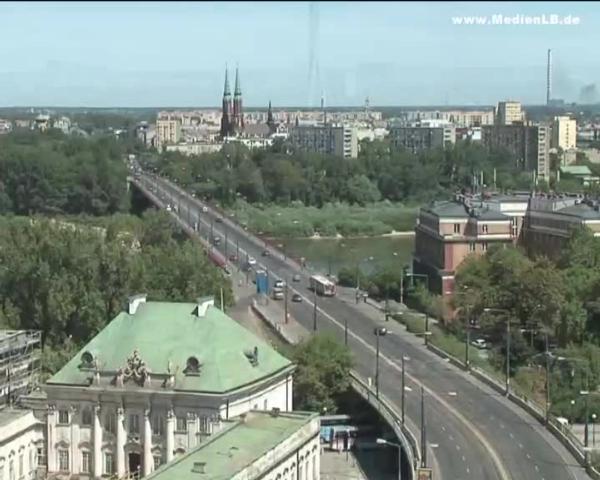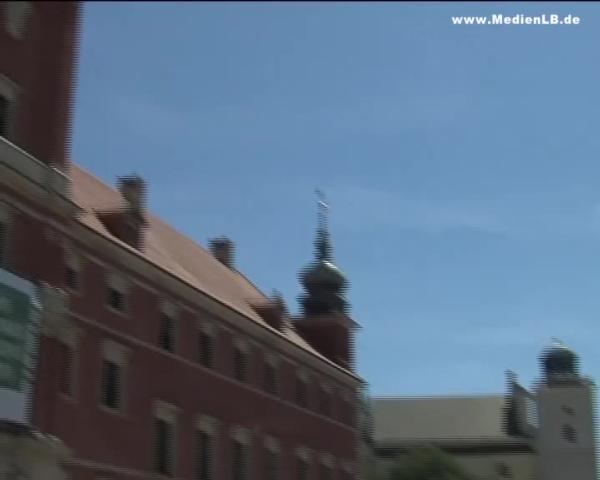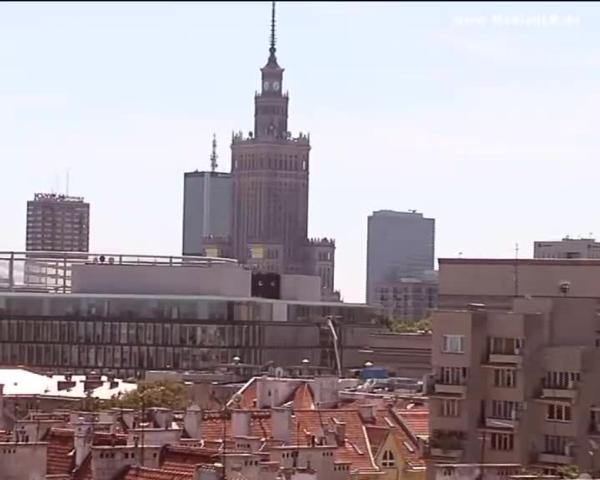Hauptstädte Mitteleuropas II
Bratislava, Budapest, Prag

Capitals of Central Europe II

Central Europe, the core of Europe, describes an area which cannot be defined clearly: neither politically, nor culturally nor according to landscapes. However, as natural boundaries of Central Europe are roughly considered to the west and northwest, the Rhine, to the north, the North Sea and the Baltic Sea, connected by the Eider, to the east, the Vistula, to the south, the Carpathians and the Alps. Germany, Switzerland, Liechtenstein, Austria, the Czech Republic, Slovakia, Hungary and Poland belong to Central Europe. Europe is situated in the temperate zone. Contrary to the Scandinavian countries, for example, the Central European states belong to warm and temperate climates. 1. Bratislava 1.1 Little Big City Directly on the national borders of Hungary and Austria, only 60 kilometres away from Vienna, is the Slovakian capital Bratislava. Bratislava has about 425,ooo inhabitants and is the biggest city of Sovakia. Here was a centre of history at a very early time. It is considered the political, economic and cultural centre. Many buildings are listed. One of them is the Slovak national theatre. In St.Martin's cathedral kings were crowned during the epoch of the Hungarian monarchy. At the age of six Mozart gives a guest performance in Bratislava. Here Franz Liszt starts his career of a piano virtuoso and Bela Bartok received his basic musical training. The late baroque summer palace of the Count Grassalkovich was the centre of baroque music. Today it is the seat of the president. The atmosphere of the city has always been influenced by philosophers and scientists. Until today the Comenius University has been proof of this. 1.2 The City on the Danube In Bratislava the Danube is up to 300 metres wide. Several bridges join the different parts of town. The best known is the Novy Most. The four-lane bridge with its footway is a symbol of modernity. The historic landmark of the city, the castle of Bratislava, rises on a rock on the bank of the Danube. Already since the early Stone Age the rock has been settled because of its strategically favourable location and for almost 400 years the border of the Roman Empire ran along there. Visible from the castle, upstream, there is the Slovak parliament. Tourists keen on romance on the waves travel to Vienna by boat. Those who are in a hurry use the fast catamaran. The Twin City Liner reaches its destination in about 75 minutes. Only few kilometres away from Bratislava, where the March and the Danube meet, lies the castle of Devin. It is also known as the castle of Thebes. Already before Christ the castle rock was of great strategic importance. The fortress built by Slavs in later times has experienced a dramatic history. Today it is a national cultural monument. 1.3 Life in Bratislava A picturesque old town centre forms the historic heart of Bratislava. Cafés and restaurants are just as characteristic of the main square as the baroque tower of the old city hall. Odd characters have settled in the inner city: the gawpers. One of them is hiding in a drain shaft and is watching from there what is going on. The poor gawper has already been run over several times by cars. A special road sign is supposed to protect him. The Michaeler Gate which offers a wonderful view of the city is the only remnant of the old town fortifications. Traditionally Bratislava has been influenced by several peoples. Various cultures live together peacefully here. Among them are also the Roma. Living in the old town centre has a special aura, but also its price. By now Bratislava has become an open city. History and modernity form a harmonious entity. Everyone can convince himself of that. 2. Budapest 2.1 The Metropolis on the Danube The capital of Hungary is Budapest. It is situated on the Danube, in the north of the country, not far from the Slovakian border. 1.7 million inhabitants enjoy a relatively dry but moderate, continental climate with cold winters and warm summers. The history of Budapest starts with the foundation of the Roman settlement of Aquincum in about 89 a.D. Budapest is a twin city. It consists of the districts of Buda and Pest. These are separated by the Danube. Numerous bridges connect the parts of town. The first connection was the Kettenbrücke, built from 1839 to 1849, a landmark of the city. Shipping on the Danube is still very much alive today - international cargo boats and luxurious cruise liners pass Budapest by water. 2.2 The Districts of Buda and Pest The district of Pest, on the flat eastern bank of the Danube, covers two thirds of the city area. The banks of the Danube offer a gallery for architecture. The most imposing building is the parliament, which was adapted from the one in England. It has about 700 rooms. Not far from it is the Academy of Sciences, the highest scentific authority in Hungary. On the Heldenplatz crucial events of Hungarian history have taken place. The most important personalities of Hungarian history have been immortalized in the Monument for the Millennium. The national pride of Hungary is reflected in the statues adapted from Roman style. The art gallery is quite near. National and international artists are invited for exhibitions. After the end of the Second World War a lot of Jewish emigrants returned to Budapest. The synagogue in Dohany Street, in the 7th district, is the biggest in Europe. 3000 believers find room here. In its courtyard there is the holocaust memorial of the sculptor Imre Varga. The biggest Christian church of the city is the basilica of St.Stephen in Pest with its 96-metre-high dome. The embalmed right hand of King Stephen is exhibited inside the cathedral as an outstanding relic. Hilly Buda, situated on the west bank of the Danube, covers the remaining third of the city area of Budapest. The mighty castle complex is perched 60 metres high above the Danube: for centuries it has been the residence of the Hungarian kings. Many tourists are impressed by the palace. It is easily accessible by funicular railway. The bird Tutul keeps a watchful eye on all movements in the palace. It is considered the progenitor of Hungarians and is the giant falcon of their legends. Through the Lion's Gate we proceed to the inner courtyard of the palace complex. The equestrian statue of Prince Eugen of Savoy dominates the front of the main entrance to the palace. The Austrian general is the hero of Hungarian history. He defeated the Turks in 1697 and liberated the country. The Matthias fountain reminds of King Matthias Corvinus, who died in 1495. He was a popular hero. The most beautiful view of the city is probably offered by the Fishermen's Bastion with its bizarre towers. The neoromanesque complex has been built where formerly the medieval fish market had its place. In front of the Bastion stands the equestrian statue of St.Stephen, the first king of Hungary. He spread Christianity in Hungary. The church of St.Matthew in Buda, built in the 13th century, is the best-known church of Budapest. It is located in the castle area, too, and named after the popular king Matthias Corvinus. Downriver, in Buda, rises the Gellertberg. Visible from afar is the monument for the soldiers who achieved Hungary's liberation in the 2nd World War. 2.3 Infrastructure and School System in Budapest The underground of Budapest is, after the London underground, the second oldest in Europe. It was completed in 1896 and is therefore also called millennium railway. Three international train stations with direct connections link Budapest to 25 European capitals. Trains between Vienna and Budapest run every three hours. The Hungarian school system combines the old and new education systems. Its basis is an eight-year primary school. Middle school is not subdivided. Like in the German-speaking region there are grammar schools and other secondary schools. 2.4 The Aura of the City Budapest is also known as the city of the spas. Already the Romans used the spas of the city. They also influenced the prestigious and impressive spa architecture. The most attractive shopping areas of Budapest are in Pest. The pedestrian precinct of Vaci utca has preserved its special charm as the oldest commercial area of Budapest. Restaurants and small eating places, buskers and gypsies, young and old, make the streets lively and convey a very special atmosphere to the metropolis on the Danube. Thus the pedestrian precinct becomes a concert hall, the Heldenplatz a skateboard park. The small communal wood near the Heldenplatz is a favourite recreation area. In its centre lies the castle of Vajdahunyad. It was built in 1896, modelled on a castle in Transylvania and is as romantic as a fairy-tale castle. The Monument to the Anonymus was built in honour of an anonymous story teller, who probably lived in the 12th or 13th century. He is said to have written down the first Hungarian chronicle. An excursion on the Danube shows up in a marvellous way the magnificent historic buildings and symbols of the city. 3. Prague 3.1 The Metropolis on the Vltava The capital of the Czech Rebublic - Prague - is located in the centre of Europe. 1.2 million inhabitants live there on 500 square kilometres. Already in early history settlements appear in the Prague basin on both sides of the Vtava. Soon they grew into a significant centre of commerce. Many important trade routes met just here, in Prague. It was Charles IV who realized the strategically favourable situation of the city. He has the first permanent connection across the Vitava built - the Charles Bridge. Nevertheless, the nobility remains on the castle side and the merchants in the old town centre on the opposite bank. Since the 9th century the Hradschin mountain has demonstrated wealth and power. Here the largest castle compound of the world is built - the castle of Prague. Generations of architects have formed the present view in various styles. The castle itself was the seat of the respective monarchs from the very beginning. Still today it is the residence of the president. The largest church of the Czech Rebublic - St.Vitus' cathedral - dominates the centre of the castle complex. The cathedral was built in the Gothic style by order of Charles IV. This was in the year 1344 in which Prague was promoted to archbishopric. Until the last building efforts were completed, several hundred years had to pass. Inside the impressive monument the head of St.Vitus, the patron saint, is kept. It is the most precious relic of the cathedral. 3.2 Architectural Sights The old town centre, the merchants' quarter, has always been the most vigorous district. Already in the 10th century merchants and tradesmen settled here. As a result the big market square has always been the heart of the quarter. Today it is called Old Town Ring. In the yard behind the Teyn church travelling merchants paid their "Ungelt" - that is their customs duty. The architecture round the square is exceptional. Romanesque and gothic houses of the old town were frequently enlarged in the baroque style. The excursion into Prague history starts exactly here - where also the first kings were crowned. The hourly carillon of the astronomical clock at the old town hall is proof of the craftsmanship and intellectual tradition of Prague. At the edge of the old town is the Square of the Republic. Next to the Gunpowder Tower is the Representation House, the community centre, built in the impressive style of Secessionism. The sixty-five-metre-high Gunpowder Tower took all of 400 years to build. In the 17th century black powder was stored here - therefore the name. The Strahov monastery on the Hradschin mountain shows various styles typical of Prague. Many Romanesque monuments are finished in the early Gothic style. Some even show traces of baroque or Renaissance style. Also modern architectural features can be found in Prague, such as cubism. The Dancing House of the American architect Frank O.Gehry shows peculiar features. It is meant to remind of the successful dancing partners Ginger Rogers and Fred Astaire. 3.3 Cultural Life in Prague Already early on Prague became a centre of European culture. Czech music and theatre were born here. The summit of Prague pride has been immortalized in the building of the national theatre. With its construction financed by the people it was the stage for the composers Anton Dvorak and Friedrich Smetana. The " stavovské divadlo" with its Czech and German ensemble was an international meeting point. Here Wolfgang Amadeus Mozart put on stage his operas "Marriage of Figaro" and "Don Giovanni". Also Carl Maria von Weber and Clara Schumann worked here. In the sumptuous national opera Richard Wagner's "Ring of the Nibelung" was performed 50 times. The opera known as bilingual (German and Czech) was built in the 19th century by the German Theatre Association. Early on Prague already had a numerous Jewish community in the old town quarter "Josefstadt", which played a very big cultural role. Franz Kafka, who was born here, became world famous. The synagogues in the Josefstadt count among the oldest in Europe. Already in the 13th century the first was built. The best known is the Jubilee Synagogue, built in an impressive style. The old Jewish cemetery doesn't only tell the history of its community - it is also an integral part of Prague culture. Not only classical music has a home in Prague, jazz, too, finds its place here. Since its early days the city has lived with music. Artistic freedom and individuality were established under the reign of Charles IV and are still very much alive. The historico-cultural structures of Prague house the modern "way of life". The old town centre of Prague which was declared a World Cultural Heritage by UNESCO is at present an integral part of this metropolis. St.Wenceslas, dominating the Wenzel Square, has often witnessed historic events. The aura of the city is not only marked by buskers, but also by cafés and restaurants. The traditional Bohemian way of cooking is very much appreciated. On the Vltava people love good, solid meals. Its complex history is the core of Prague, the open European metropolis, that holds attractions for everybody. 4. Warsaw 4.1 Infrastructure The capital of Poland is Warsaw, one of the most important centres of traffic , economy and trade in Central Europe. The city on the Vistula is home to 1.7 million inhabitants. Due to its eventful history and geographic position between Central and East Europe, the city is of great political importance. It is also the centre of a prosperous economy. About 15% of the gross domestic product are made here. The service sector dominates the economy in Poland. It constitutes far more than half the gross national product. The centre and the financial metropolis is Warsaw. Thus it is the prime destination for investors from abroad for business deals between Central and East Europe. The Warsaw stock exchange is one of the fastest growing exchange centres of the world. The city has an international airport and a subterranean central station. The motorway network is still under construction. A high-speed section to the Baltic states is being planned for 2015. Public transport consists of busses and tramways. Warsaw is regarded as city of scholars. The scientist Stanislav Staszic gave his name to the Staszic palace. It was built in the 19th century for the "Friends of Science"and has been the seat of this organisationup to now. Warsaw university is one of the most important universities of the country. Here theory is directly put into practice. The Polish school system has three stages. Primary school, middle school, vocational training or A-levels. Compulsory school education lasts until the age of 18. 4.2 Political and Historical Scene The old town centre was declared UNESCO world cultural heritage. The big triangular castle square is the most representative square of the quarter. Here Warsaw was founded as the new ducal town in Masovia. The royal castle was built at the end of the 16th century in early baroque style. During the bombing of Warsaw in 1939 the castle was burnt down completely. After the war the ruin was rebuilt true to the original with donations from the people. Sigismund III Wasa, King of Poland, declared Warsaw capital in 1569. This is commemorated in the symbol of the city - the Sigismund column. It dominates the centre of the square. Since the 13th century the magnificent market square has marked the geographic and historic centre of the old town. Mostly traders and merchants lived here. In the middle of the square there is the popular nymph Syrenka, who lifts her sword protectingly towards the city. According to legend she helped to found the town, that's also why she appears in the municipal coat of arms. Near the market square is St.John's cathedral. It is the oldest preserved church of Warsaw. The late gothic church of Our Lady also belongs to the oldest in town. After the outbreak of the 2nd World War in 1939 Warsaw becomes the centre of the resistance movement against National Socialism. Five years later, in August 1944, the Warsaw Uprising was triggered off. This was brutally quelled by the German occupying forces. A monument reminds of this. A sad memorial commemorates what happened in the Warsaw ghetto. It was the largest of its kind. Jews from Poland and many countries occupied by the National Socialist forces were transported here. Life circumstances in the ghetto were cruel. Most Jews were to meet their end in one of the extermination camps. 4.3 Warsaw Today Up to now the cityscape of Warsaw has been dominated by buildings made from prefabricated slabs. A conspicuous heritage of the Communist era. The architecture of social realism , though, presents itself quite differently. The Palace of Culture and Science, popularly called "Stalin's Sting", soars up dominatingly in the city centre. It shows the Communist wedding-cake style. With about 230 metres the Palace of Culture is the highest building of the city. It houses numerous radio and TV stations, but also cinemas, theatres and museums. At the beginning of the 90s a change in architecture became apparent. Skyscrapers made of glass such as the 164-metre-high Hotel Continental characterize the skyline. The appearance of the city changes almost every day. Not in the old town, however. Here the past is still alive and ensures a balance between yesterday and today.


